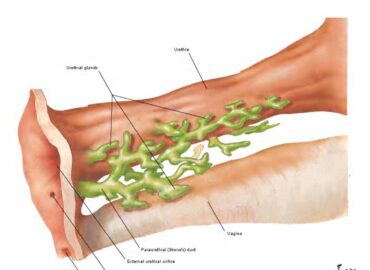Skene’s glands are two tiny ducts in the anterior section of the vaginal wall that run along both sides of the urethra. These glands, also known as the “female prostate,” are not the same as the prostate glands in male anatomy. The nickname stuck because of the similarities between the female and male prostate glands, such as the ability to empty fluids into the urethra.
Skene’s glands are also thought to influence or make up a component of the female G-spot. They’re made up of the identical tissues that make up the clitoris.
Other names for Skene’s glands include:
- Skene’s ducts
- vestibular glands
- paraurethral glands
- periurethral glands
Where are skene glands located?
On either side of the lower end of the urethra—the tube through which urine escapes the body—the Skene’s glands are positioned on the front wall of the vagina. The Skene’s glands are ducts that emit secretions through minute, pinprick-sized exterior pores. Their ducts open in the vestibule, the part of the external female genitalia bounded by the labia minora, on either side of the urethra.
The internal section of the Skene’s glands, like the male prostate, embrace the lower end of the urethra. The glands vary in size from woman to woman.
Purpose Of Skene Glands?
Skene’s glands play important roles in both urinary and sexual health. The glands first release fluids into the urethra, lubricating it. The urethra is a tube that is an important feature of the urinary system because it transports urine from the bladder.
Skene’s glands are also thought to contain antibacterial compounds. These, once released, may aid in the prevention of urinary tract infections (UTIs). Skene’s glands, like the male prostate gland, play a function in sexual wellness. Due to increased blood supply to the area, the Skene’s glands and the clitoris swell when stimulated.
Skene’s glands secrete mucus-containing secretions that help with lubrication during vaginal intercourse as they get stimulated. Female ejaculation may also be due to fluid secretion from these glands, according to researchers.
Functions of the glands
Both urine and sexual health are dependent on the Skene’s glands.
Urinary Purposes
The Skene’s glands produce secretions that leak into the urethra and keep it lubricated. These secretions are antimicrobial and may aid in the prevention of urinary tract infections (UTIs)
Sexual Purposes
During sexual stimulation, the Skene’s glands assist lubricate the vagina. During sexual stimulation, the glands are surrounded by clitoral tissue, which expands. The Skene’s glands are stimulated to release a mucus-rich fluid as a result of the enlargement.
Skene’s glands are also assumed to be the cause of female ejaculation, which is the emission of a thick milky white fluid during orgasm.
Studies show that this milky fluid contains some of the same proteins as the fluid generated by the prostate during male ejaculation, such as prostate-specific antigen (a protein produced by both malignant and non-cancerous prostate cells). It can sometimes cause diseases that are diagnosed sexual health screening and HIV test in Dubai.
Although some people confuse the terms squirting and female ejaculation, they are not the same thing.
Recap
Skene’s glands, a pair of small, pea-sized glands situated on the front wall of the vagina towards the end of the urethra, are a lesser-known feature of the female genitalia. Skene’s glands lubricate the urethra and are crucial for urine and sexual health.
Because the Skene’s glands grow from the same cells that become the prostate gland in males, some individuals prefer the term “female prostate.”
Skene’s glands can create health concerns on rare occasions, notably when they become infected. Skene’s gland cancer is relatively uncommon. The Skene’s glands are discussed in this article, including their location and structure, their functions in urine and sexual health, and health concerns linked with these glands.




